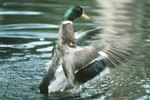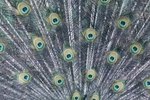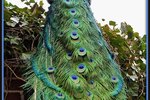Sparrows are small (about 4 to 7 inches long) birds of the Passeridae and Emberizidae families. These birds are so common to every continent (except Antarctica) that in many countries they're considered pests. These birds are omnivorous (they eat both plants and insects), devouring different seeds, berries and bugs.
Egg
American sparrows breed between May and September. The female lays between four and six eggs. Both parents take part in incubating the eggs for 10 to 14 days and taking care of the young, which are born with down but develop feathers quickly.
Hatchling
Hatchlings are altricial (helpless) and rely on the parents for protection and warmth. Both parents feed the chicks until they're about six weeks old. Some species "push" out siblings so that only the strongest of the brood survive. Hatchlings that are featherless must be fed every 15 to 20 minutes from about sunrise to sunset (or later).
Fledgling
Infants reach fledgling stage around the 10th day of life. Fledglings are partially feathered birds and usually jump or fall out of the nest as they're learning to fly. The mother bird continues feeding the fledgling if it falls to the ground until it learns to fly. The fledgling period is 12 to 20 days.
Flying
Sparrows are usually able to fly by the third week of life, but the parents continue to provide food until the fifth or sixth week. This stage is important for young sparrows to gain strength and skill at flying. They are extra vulnerable to predatory animals during this learning stage as they fall frequently, exhaust themselves easily and even crash.
Adulthood
Sparrows are old enough to live independently by the time they're six to seven weeks old; they usually have the strength and skill to fly well by this time. It's unknown at what age these young birds are ready to seek mates; however, it is known that sparrows are monogamous. They rarely migrate (except in extremely cold or high-altitude areas) and can be spotted in winter eating seeds and nuts. They nest in pairs under the snow. In the spring, nests are made out of grass, roots and hair.
References
Photo Credits
-
sparrow image by Henryk Olszewski from Fotolia.com
Writer Bio
Carmen Laboy has been publishing short stories and poetry since 1998. Her work appears online and in "Tonguas Experimental Literature Magazine." She was a script reader for the Duke City Shootout 2010, arts education intern at 516arts gallery and has worked as an assistant for many artists. She studied at the Universidad de Puerto Rico and Escuela de Artes Plasticas, a prestigious art college.





